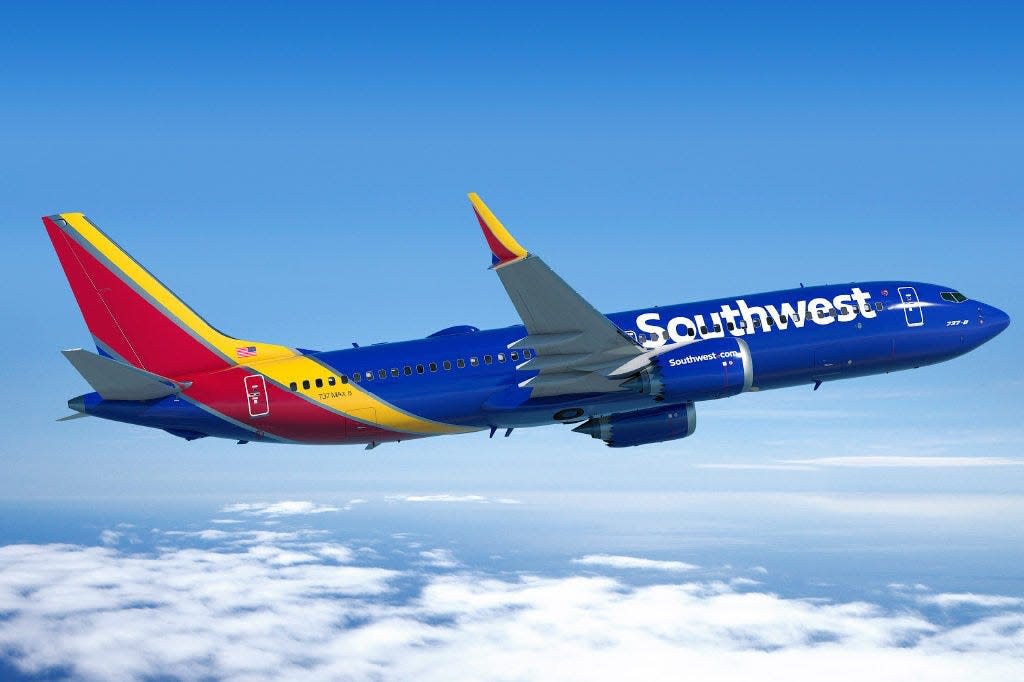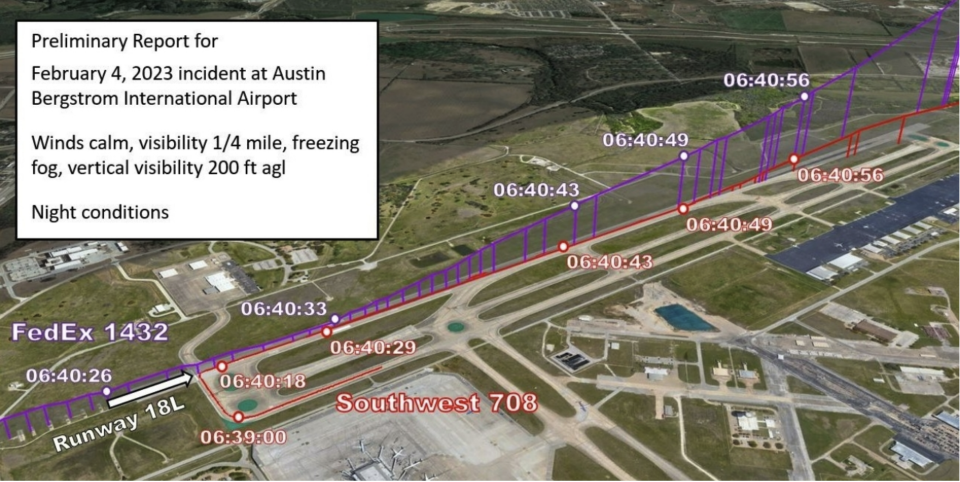Preliminary report reveals more details on timeline of near collision at Austin airport

The National Transportation Safety Board released a preliminary report on Thursday detailing the events of the near collision between a FedEx cargo plane and a Southwest Airlines jet at Austin-Bergstrom International Airport on Feb. 4.
The report stated that the closest proximity between the two planes has not been determined yet. NTSB Chair Jennifer Homendy said they "believe the planes were within 100 feet of each other."
The NTSB is also investigating an incident Monday night at Boston’s Logan International Airport in which a Learjet pilot began to take off as a JetBlue plane approached to land on an intersecting runway, the Associated Press reported.
Additionally, there have been several recent incidents involving severe turbulence causing injuries on planes. In the most recent case, a Lufthansa plane flying from Austin to Germany diverted to Washington Dulles International Airport on Wednesday night. Camila Alves McConaughey, model and wife of actor Matthew McConaughey, shared a video on social media from onboard the flight in which seven people on board were hurt badly enough to go to local hospitals. The FAA said it is investigating.
“Runway incursions have always been an area of concern, but it looks worse because the system is so safe, John Hansman, an aeronautics professor at the Massachusetts Institute of Technology told the AP. “We fortunately don’t have many accidents, so we focus on these risk precursors.”
Timeline of near collision at Austin airport
The Austin Airport Traffic Control Tower’s air traffic manager stated that there was an extremely low traffic volume that morning. According to the report, weather conditions had calm wind, but visibility was limited by about ¼ of a mile due to freezing fog.
Audio recordings of air traffic control at about 6:34 a.m. revealed that the pilot of the FedEx plane established communication with the controller while approaching runway 18L. The report stated that the controller provided the pilots with the runway visual range values and cleared them for landing.
Just four minutes later, the first officer of the Southwest Airlines flight checked in with the controller that “they were holding short of runway 18L and were ready for takeoff.” The controller provided them with the runway visual range values and issued a standard takeoff clearance from runway 18L due to the FedEx plane’s 3-mile final approach on the same runway, according to the report.

The first officer of the Southwest Airlines flight acknowledged the clearance and lined up on the runway centerline, according to the report. Control of the aircraft was then transferred from the captain to the first officer who “advanced the power, checked the engines and then released the brakes to begin their takeoff roll.”
At 6:39 a.m., the pilots of the FedEx plane asked for confirmation to land because he was “concerned about the Southwest traffic,” according to the report.
The controller confirmed and advised the FedEx plane that the Southwest flight would be departing on runway 18L ahead of them, the report stated.
More:Why this expert says the near collision at Austin airport is 'very rare'
Less than a minute later, the FedEx plane had about a 0.7-mile final when the controller asked the Southwest flight to confirm they were on a roll. The captain of the Southwest flight replied with “rolling now.”
The captain of the FedEx flight “noted that at an altitude of about 150 feet, the first officer called go-around after visually seeing the Southwest Airlines flight at approximately 1,000 feet to 1,500 feet from the approach end of the runway,” the report stated.
At 6:40 a.m., one of the FedEx crew members then broadcasted “Southwest abort” and then “FedEx is on the go” three seconds later — meaning the plane reversed its landing.
Grabbed the audio from @liveatc. I have edited it to remove dead spots. It did NOT happen this fast. pic.twitter.com/YfYJKV3vp5
— Haemaker (@haemaker) February 5, 2023
According to the report, the captain of the Southwest flight noted that they were between the speeds of 80 KIAS and V1 when he and the first officer heard FedEx call for a go-around.
Automatic Dependent Surveillance-Broadcast data revealed that when the FedEx plane was climbing out of 1,900 feet at the departure end of the runway, the controller told FedEx to “turn left heading 080 and maintain 3,000 ft.” At the same time, the Southwest Airlines flight was about 1,000 ft lower than the FedEx plane and began a right turn away from the runway heading.
The Federal Aviation Administration and the NTSB continue to investigate the incident, as the traffic alert and collision avoidance system computers have been removed from both airplanes to be analyzed.
More:Camila Alves McConaughey onboard turbulent flight from Austin that injured 7
The Associated Press contributed to this report.
This article originally appeared on Austin American-Statesman: Preliminary report reveals details on near collision at Austin airport

